Revitalising Muscles via Electrotherapy
Muscle Revitalisation with Electrotherapy, a therapeutic technique utilising electrical energy to stimulate the body’s tissues, has garnered considerable attention in physical rehabilitation and wellness. This groundbreaking method is not just a contemporary fad; it has historical foundations that trace back to ancient civilisations, where electrical phenomena were utilised for therapeutic benefits. Currently, electrotherapy includes a range of modalities, such as transcutaneous electrical nerve stimulation (TENS), neuromuscular electrical stimulation (NMES), and interferential current therapy, each tailored to target particular health issues.
The evolution of our understanding of human physiology and the complexities of pain management has led to the advancement of electrotherapy, establishing it as an essential element in modern therapeutic practices. The renewed focus on electrotherapy is due to its non-invasive characteristics and the increasing evidence that backs its effectiveness. As more individuals look for alternatives to medication, electrotherapy emerges as an appealing solution for managing muscle pain, aiding in injury recovery, and enhancing overall physical well-being.
The attraction is found in its capacity to relieve discomfort and its potential to improve muscle function and facilitate healing. As we explore the mechanisms of electrotherapy, it becomes clear that this versatile approach provides numerous advantages for those aiming to enhance their physical health and well-being.
Summary
- Electrotherapy is a therapeutic approach that employs electrical energy to activate muscle tissue and facilitate healing.
- Electrotherapy transmits electrical impulses to specific body regions, aiding pain reduction, enhancing muscle strength, and boosting blood circulation.
- Electrotherapy offers numerous advantages for muscle revitalisation, such as alleviating pain, promoting muscle relaxation, enhancing range of motion, and speeding up tissue healing.
- Numerous electrotherapy devices, such as TENS units, EMS devices, and ultrasound machines, are on the market. Each is designed for particular applications and offers distinct advantages.
- When utilising electrotherapy for muscle revitalisation, it is essential to adhere to the manufacturer’s guidelines, tailor the settings to your comfort, and seek advice from a healthcare professional if you have any concerns or pre-existing health conditions.
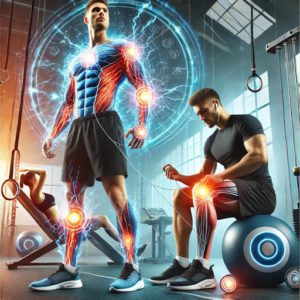 Understanding How Electrotherapy Works
Understanding How Electrotherapy Works
Electrotherapy relies on applying electrical impulses to affect the body’s physiological functions. When electrical currents are introduced to the skin through electrodes, they engage with nerve fibres and muscle tissues, initiating a series of biological responses. TENS operates by transmitting low-voltage electrical signals interrupting pain signals en route to the brain, relieving chronic pain conditions.
This mechanism is frequently compared to a natural pain relief system, as it promotes the release of endorphins—our body’s intrinsic painkillers—thus diminishing pain perception. Furthermore, neuromuscular electrical stimulation (NMES) advances this idea by directly targeting muscle fibres. NMES stimulates motor neurones to induce muscle contractions, aiding in muscle strengthening and playing a vital role in rehabilitation after injury or surgery.
The dual action of pain relief and muscle activation showcases the versatility of electrotherapy as a treatment option. As research progresses in understanding the intricacies of electrical stimulation’s impact on cellular activity and tissue repair, it is evident that electrotherapy serves not merely as a short-term solution but as a significant instrument for enduring muscle rejuvenation.
Benefits of Electrotherapy for Muscle Revitalisation
Electrotherapy offers numerous advantages for muscle revitalisation, positioning it as a compelling choice for athletes, rehabilitation patients, and individuals aiming to improve their physical performance. A key benefit is its capacity to enhance recovery from injuries. Through the promotion of blood flow and the reduction of inflammation via electrical stimulation, electrotherapy has the potential to accelerate the healing process for muscle strains and tears significantly.
This approach is especially advantageous for athletes who resume their sport following an injury, enabling them to recover strength and functionality more swiftly than relying solely on conventional rehabilitation techniques. Beyond aiding in injury recovery, electrotherapy enhances muscle strength and endurance. Consistent application of NMES can result in improved muscle mass and better neuromuscular coordination, which are crucial for achieving peak physical performance.
Moreover, electrotherapy offers significant benefits for those who might find it challenging to participate in traditional exercise due to pain or mobility constraints. Electrotherapy provides a valuable alternative for stimulating muscle activity, eliminating the necessity for intense physical exertion. This innovative approach paves the way for maintaining fitness and preventing muscle atrophy in individuals with restricted mobility.
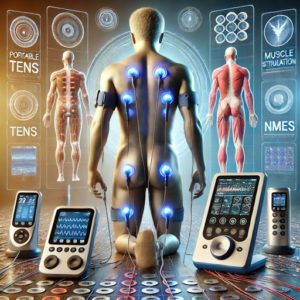 Types of Electrotherapy Devices
Types of Electrotherapy Devices
Electrotherapy devices are varied, addressing various therapeutic requirements and individual preferences. The TENS unit is one of the most frequently utilised devices, crafted explicitly for effective pain management. These portable devices generally come equipped with various settings, enabling users to customise the intensity and frequency of electrical impulses to suit their comfort levels.
TENS units are frequently utilised in home environments, offering individuals a convenient way to manage chronic pain conditions like arthritis or lower back pain without depending exclusively on medication. Conversely, NMES devices are meticulously designed for muscle stimulation and rehabilitation. The complexity of these units can vary greatly, ranging from basic handheld devices to advanced systems utilised in clinical environments.
Specific NMES devices come with sophisticated features, including programmable settings that enable healthcare providers to customise treatment protocols according to each patient’s needs. Furthermore, hybrid devices combine TENS and NMES capabilities, providing a holistic solution for pain relief and muscle rejuvenation within a single unit. With the ongoing technological advancements, we can anticipate a wave of innovative devices designed to improve electrotherapy’s effectiveness and user experience.
How to Use Electrotherapy for Muscle Revitalisation
Employing electrotherapy for muscle revitalisation requires a careful strategy to achieve the best outcomes while reducing discomfort. It is crucial to seek guidance from a healthcare professional or physiotherapist before initiating any electrotherapy program. They offer expert advice on selecting the ideal device for your unique requirements and assist in creating a customised treatment plan for your condition.
After selecting a device, it is essential to become acquainted with its operation; most units include user manuals that detail the proper setup of electrodes and adjustments for optimal effectiveness. Correct positioning is essential when utilising electrotherapy. Electrodes must be positioned precisely over or near the targeted area, ensuring optimal contact with the skin to transmit electrical impulses effectively.
It is recommended to start with lower-intensity settings and gradually increase them as your comfort level permits. Sessions generally range from 20 to 30 minutes and are tailored to each person’s tolerance and treatment objectives. Maintaining consistency is essential; integrating electrotherapy into your routine multiple times a week can significantly enhance muscle strength and recovery over time.
As you advance, monitoring your experiences can assist you in refining your strategy and optimising the advantages of this impactful therapeutic resource.
 Precautions and Considerations for Electrotherapy
Precautions and Considerations for Electrotherapy
Electrotherapy is typically considered safe for most people; however, specific precautions must be taken to guarantee its effective application without any negative consequences. Individuals with certain medical conditions, including epilepsy and heart disease, or those with implanted medical devices such as pacemakers, should refrain from using electrotherapy without expert guidance. The electrical impulses could disrupt these conditions or devices, resulting in potentially serious complications.
Furthermore, pregnant women should exercise caution and seek guidance from their healthcare provider before utilising any electrotherapy. It is crucial to consider skin sensitivity, as specific individuals might encounter irritation or allergic reactions at the electrodes’ sites. To reduce this risk, hypoallergenic electrodes are recommended, and the skin must be confirmed that it is clean and dry before application.
Additionally, it is essential to avoid placing electrodes on areas with broken skin or open wounds, as this may increase irritation or result in infection. Paying attention to your body during treatment is crucial; should you encounter any unusual discomfort or adverse reactions, you must stop using immediately and consult a healthcare expert.
Incorporating Electrotherapy into Your Muscle Revitalisation Routine
Integrating electrotherapy into your muscle revitalisation regimen can significantly enhance your journey towards optimal physical health and performance. This therapeutic modality effectively alleviates pain, improves muscle function, and accelerates recovery from injuries, providing a comprehensive approach that works in harmony with traditional rehabilitation methods. With an increasing number of individuals acknowledging the advantages of electrotherapy, it is emerging as a vital component of wellness routines among diverse groups—from athletes aiming for optimal performance to those in recovery from surgery or coping with chronic pain issues.
Ultimately, successfully integrating electrotherapy into your routine hinges on a thorough understanding of its mechanisms and a commitment to best practices for use. Consulting with healthcare professionals and being mindful of safety precautions allows you to harness the power of electrical stimulation to revitalise your muscles effectively. As research advances our understanding of electrotherapy’s potential applications, this innovative treatment is poised to take on a more significant role in improving physical well-being in the years ahead.
Adopting this technology enables individuals to take charge of their recovery journey and encourages a proactive mindset for sustaining long-term health and vitality.
Electrotherapy offers a fascinating option for those interested in alternative muscle recovery and enhancement therapies. However, it’s also worth exploring other complementary treatments that can be integrated with electrotherapy for optimal results. One such treatment is cupping therapy, which has been gaining popularity for its potential to improve circulation and relieve muscle tension. To learn more about how cupping can complement electrotherapy and other muscle treatments, you might find the article “Cupping Therapies: Unveiling the Mysteries” quite enlightening.
FAQs
Could you tell me what muscular electrotherapy is?
Electrotherapy for muscles uses electrical stimulation to alleviate pain, increase strength, and speed up healing.
What is the process of electrotherapy for muscles?
Electrotherapy is effective when electrodes are applied to the skin and electrical impulses are sent to the muscles. In addition to alleviating pain, these shocks can boost circulation and induce muscular contractions.
In terms of muscles, what are the advantages of electrotherapy?
Electrotherapy for muscles can reduce pain, enhance strength and endurance, increase mobility, and speed up recovery from muscular injuries.
Does muscle electrotherapy pose any risks?
Electrotherapy is safe for muscles when done correctly by certified experts. However, following a healthcare provider’s rules and suggestions is crucial to minimise any possible hazards.
Who are the ideal candidates for muscular electrotherapy?
Electrotherapy can help those experiencing muscular soreness, damage, weakening, or atrophy. It can also be used in rehabilitation after an injury or surgery.
Does electrotherapy have any potential side effects?
Pregnancy, having a pacemaker or other implanted electronic device, or having a certain skin disease are all reasons why electrotherapy for muscles should not be done. If you have health concerns, talk to your doctor before receiving electrotherapy.

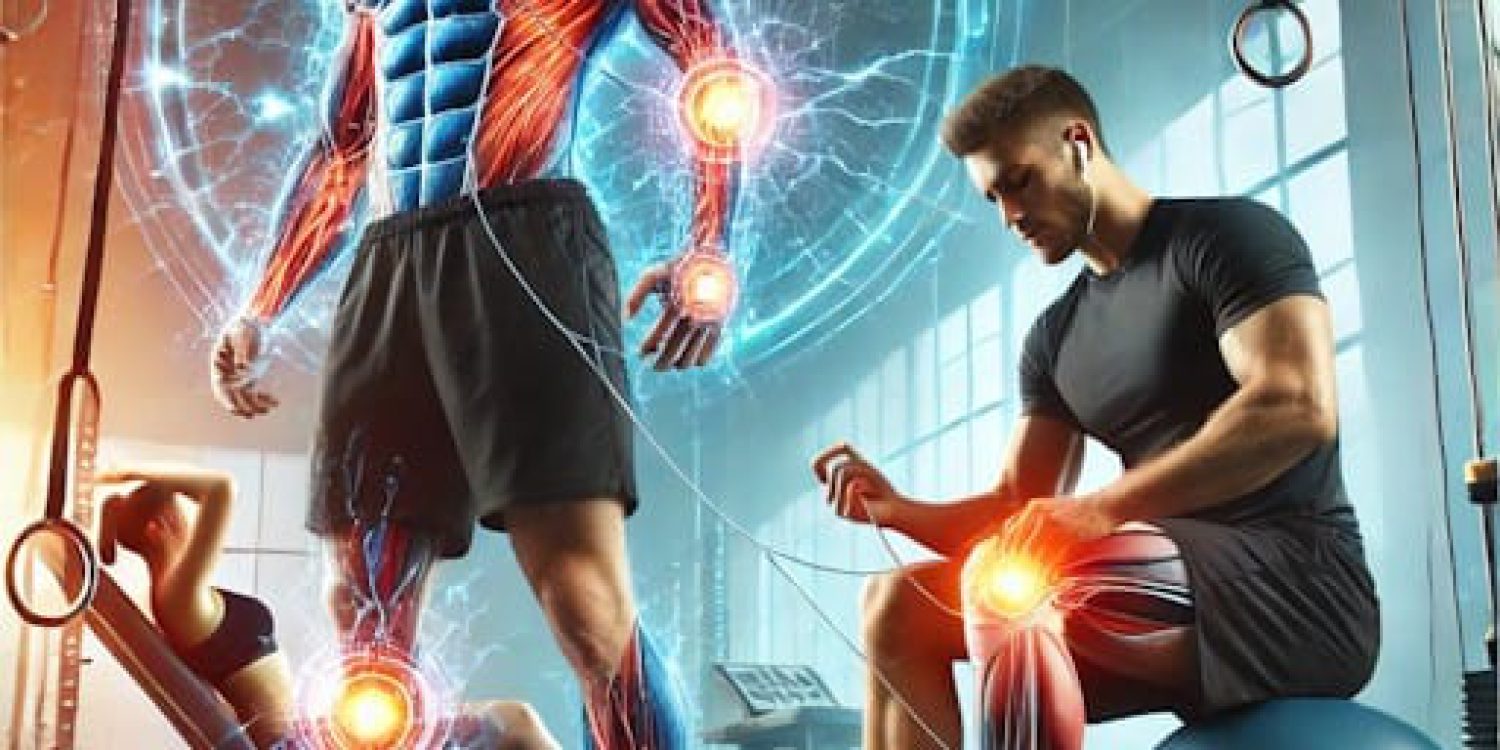















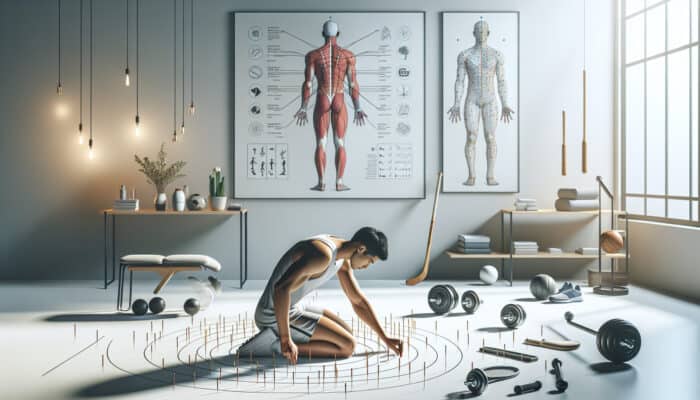

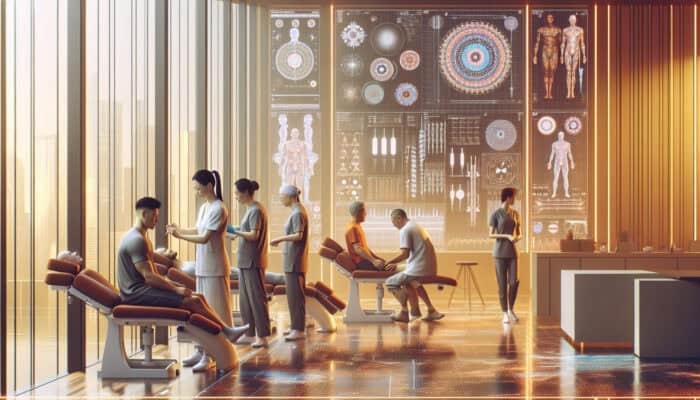



33 Comments
What a shocking (pun intended) look at the evolution of electrotherapy! It’s fascinating to think this technique has roots in ancient civilizations — I can only imagine what those early users thought when they felt that first jolt. Did they consider it a miracle, or were they just wondering who forgot to pay the electric bill?
It’s interesting to think about how people from ancient civilizations would interpret those early experiences with electrotherapy. They were working with a completely different framework of understanding about the body and health. I can only imagine the bewilderment that must have accompanied that first jolt—on one hand, they might have found it miraculous; on the other, it must have raised a few eyebrows and sparked some wild theories. After all, their knowledge of electricity was virtually nonexistent, and attributing such sensations to the work of gods or spirits wouldn’t be surprising.
“Absolutely! It’s intriguing to think about those early experiences with electrotherapy. If you’re curious about how far we’ve come, check out this link for more amazing insights into its evolution!”
https://mcrtherapies.co.uk/ig
It does make you wonder about the reactions of those ancient civilizations to something as foreign as a jolt of electricity, doesn’t it? The intersection of their understanding of the body and the sudden introduction of a physical phenomenon like electrotherapy must have led to some fascinating interpretations. I can imagine some might have viewed it as a divine sign or a blessing, while others probably speculated about whether it was a curse or a punishment.
It’s fascinating to consider how modern techniques like G5 massage can help with relaxation and recovery, especially when we think about how far we’ve come from those early, mysterious experiences with electrotherapy.
‘G5 Massage Improves Relaxation and Recovery’
https://mcrtherapies.co.uk/g5-massage-improves-relaxation-and-recovery/.
It’s fascinating how electrotherapy has evolved from ancient practices to a sophisticated tool in rehabilitation today. I’ve had some personal experience with TENS for chronic back pain, and it really made me appreciate the blend of old wisdom and modern technology. It’s interesting to think about how cultures throughout history understood the healing properties of electricity, even if they didn’t have the scientific backing we do now.
You’re right to highlight that blend of old wisdom and modern technology. While many ancient cultures tapped into the healing properties of electricity—like the use of electric fish in ancient Egypt—it’s intriguing to consider what they truly understood versus what we can analyze today through a scientific lens.
Isn’t it wild to think about how ancient folks were probably zapping each other with electricity and thinking, “Hey, this feels good!” Like, were they also the original electrical engineers, just without the safety manuals? Your experience with TENS is spot on; it’s like a little time machine for pain relief.
It’s intriguing to think about your journey with TENS for chronic back pain and how it connects to a much larger narrative about healing practices. The transition from ancient uses of electricity—like the Greek philosopher who observed the effects of electric fish—to modern electrotherapy certainly highlights a fascinating blend of intuition and science. Historically, many cultures tapped into the natural world around them, often leaning on what they could observe without the tools we have today. This sparks a conversation about how our understanding of health has always been intertwined with exploration and discovery.
I’m glad to hear about your positive experience with TENS! If you’re interested in exploring more about the journey of electrotherapy and its advancements, check out this insightful resource.
https://mcrtherapies.co.uk/ezi
This piece on electrotherapy offers a fascinating glimpse into a treatment that beautifully melds ancient practices with modern scientific advancements. I find it particularly interesting how electrotherapy’s historical roots in ancient civilizations highlight a timeless human desire to harness natural forces for healing.
Ah, the wonders of electrotherapy! It’s fascinating, isn’t it? It’s almost like we’ve traveled back in time to the days of ancient Greeks who figured out that those tiny electric eels might just hold the key to relief from discomfort. If only they had Instagram to document it all—talk about ancient hashtags! #SomeoneShockMe and #EelElectrotherapy could have been trending.
It’s intriguing to think about how ancient practices can resonate with modern approaches, isn’t it? The use of electric eels by the Greeks reflects a kind of ingenuity that persists in today’s explorations of electrotherapy. Nowadays, researchers are using more sophisticated technology to harness similar principles, aiming to understand how electrical currents can influence healing processes.
It really is fascinating how ancient practices can reverberate through history and find their way into contemporary methods. The Greeks’ innovative use of electric eels points to an early curiosity about the healing properties of electricity, which seems to echo today’s advances in electrotherapy. I’ve read about how researchers are exploring variations in electrical currents to not only stimulate healing but also to address issues like chronic pain and even neurological conditions.
It’s fascinating to see how modern techniques like red light therapy echo those age-old practices, blending ancient insights with contemporary science to tackle issues like back pain.
‘Back Pain Relief With Red Light Therapy’
https://mcrtherapies.co.uk/back-pain-relief-with-red-light-therapy/.
Electrotherapy is indeed a fascinating subject, especially considering its rich historical roots and its evolution into a cornerstone of modern rehabilitation. The ability of electrical energy to stimulate muscular tissues is not only innovative but also reflects a deep understanding of human physiology that has developed over centuries.
You bring up some excellent points about electrotherapy and its historical significance. It’s intriguing to think how it evolved from early experiments with electricity to a key component in modern rehabilitation practices. Just imagine how, centuries ago, people were first discovering that a flicker of electrical current could evoke a response in muscles—it’s like they stumbled upon a hidden language of the body.
Thank you for your insightful comment! If you’re interested in exploring more about the latest advancements in electrotherapy and its applications, check out this resource for a deeper dive.
https://mcrtherapies.co.uk/yt
You’re touching on something really interesting with electrotherapy. It’s fascinating how this practice has transitioned from something almost mystical to a scientifically grounded method of rehabilitation. The historical context is quite rich; early practitioners had their theories that sometimes defied what we now understand about biology. Yet, those experiments paved the way for advancements that have made a tangible impact in fields like physical therapy and sports medicine.
You raise an important point about the transformation of electrotherapy from a mystical practice to a respected method in medical science. It’s intriguing to consider how those early practitioners, despite their limited understanding of biology, were brave enough to explore the effects of electrical currents on the body. Their trial-and-error approach laid the groundwork for our current understanding, even if some of their theories seem odd by today’s standards.
You’re right; the journey of electrotherapy from its early experimental days to its place in modern rehabilitation is quite remarkable. It’s interesting to think about how pioneers like Luigi Galvani and Alessandro Volta laid the groundwork for what we now understand about electrical stimulation.
If you’re intrigued by the intersection of electrical energy and human physiology, you might find this piece on electrotherapy particularly enlightening, as it explores its transformative role in modern rehabilitation.
‘Revitalize Your Body with Electrotherapy’
https://mcrtherapies.co.uk/revitalize-your-body-with-electrotherapy/.
You bring up a great point about the historical journey of electrotherapy. It’s interesting how what began as trial and error in ancient times has turned into a sophisticated technique used by professionals today. The ability of electricity to activate muscle tissue opens up so many possibilities, not only in rehabilitation but also in pain management and enhancing athletic performance.
This is a fascinating exploration of electrotherapy and its historical significance in the realm of healing. It’s intriguing to see how techniques that were once considered innovative in ancient civilisations have, over the years, evolved into sophisticated modalities that we rely upon in modern rehabilitation practices. History often gives us a window into the innovative spirit of past cultures—it’s humbling to think that the ancient Greeks and Romans experimented with electrical phenomena long before we had the scientific understanding we possess today.
It’s really intriguing to think about how ancient practices have shaped what we now consider modern medicine. The early use of electrotherapy by the Greeks and Romans, like the methodical application of electric fish for pain relief, showcases a remarkable blend of observation and experimentation. It’s a testament to human curiosity and the drive to alleviate suffering.
It’s fascinating to see how a practice rooted in ancient traditions has evolved into a sophisticated therapeutic approach in our modern healthcare landscape. The historical anecdotes of electrical phenomena being used for healing remind us of our enduring quest for wellness. I’ve personally experienced the benefits of TENS therapy during physical rehabilitation, and I can attest to its profound impact on pain management and recovery.
This is such an intriguing exploration of electrotherapy! Your insights into its historical roots really struck a chord with me—it’s fascinating to think that something we often view as a modern treatment has been part of health practices for centuries. As someone who has experienced the benefits of TENS therapy during physical rehabilitation after an injury, I can personally attest to its effectiveness in pain management and muscle recovery.
It’s interesting you mention your experience with TENS therapy; it really showcases how far we’ve come in our understanding of pain management. What’s striking is the contrast between its historical use and its contemporary applications. Electrotherapy dates back to ancient practices, but today we’re often quick to dismiss anything that seems “old-fashioned” in favor of cutting-edge treatments that are marketed as the latest breakthroughs.
Your exploration of electrotherapy as a therapeutic technique resonates deeply with my personal experiences and observations within the ever-evolving landscape of physical rehabilitation. I’ve witnessed firsthand the transformative effects of these methods not only in clinical settings but also in everyday practices among athletes and those recovering from injuries. The historical roots you mentioned add an intriguing layer to the conversation; it’s fascinating to think about how ancient civilizations recognized the therapeutic potential of electrical phenomena long before we had the technological advancements available today.
This post on electrotherapy’s role in muscle revitalization is not only enlightening but also raises numerous intriguing questions about how historical practices can evolve into modern therapeutic techniques. It’s fascinating to think about how ancient civilizations might have utilized electrical phenomena, perhaps with rudimentary methods, long before we had a scientific understanding of their effects. It makes me wonder if they had a similar appreciation for the results achieved through these natural forces.
It’s fascinating to see how electrotherapy has evolved from ancient practices to a recognized cornerstone of modern rehabilitation. I’ve personally experienced the benefits of TENS treatment during physical therapy after an injury, highlighting its effectiveness in pain management. The non-invasive nature really caught my attention, especially compared to more aggressive treatments.
It’s interesting how the advancements in electrotherapy have changed people’s perspectives on pain management and rehabilitation. Your experience with TENS highlights the shift towards more holistic approaches in healthcare, where treatments are not only effective but also less invasive. It’s a nice contrast to the more traditional methods that often involve medication or surgery.
It’s interesting how personal experiences with treatments like TENS can really highlight the journey of electrotherapy. Your point about its non-invasive nature is key—it opens up options for many people who are wary of more aggressive interventions. This aligns with a growing shift in healthcare that prioritizes less invasive methods while still focusing on effective pain management.
It’s interesting to hear about your experience with TENS treatment. The way electrotherapy has transitioned from ancient practices—like those early uses of static electricity and even animal products—to the sophisticated devices we have today is quite remarkable. It really shows how our understanding of pain management and rehabilitation has advanced.
I can relate to your experience with TENS treatment; I recently discovered some interesting insights into infrared light therapy, which also offers a non-invasive approach to managing pain and might be worth exploring further.
‘Infrared Light Therapy: Healing Power for Pain Relief’
https://mcrtherapies.co.uk/infrared-light-therapy-healing-power-for-pain-relief/.
The exploration of electrotherapy as a tool for muscle revitalisation is particularly fascinating, especially considering how it bridges ancient practices with modern science. My interest in this area was piqued when I learned about the use of electrical stimulation by the Egyptians, who employed torpedo fish for their healing properties. It’s remarkable to see how these early ideas have evolved into sophisticated approaches like TENS and NMES today.
It’s interesting how ancient practices sometimes seem to anticipate modern science, isn’t it? The Egyptians and their use of torpedo fish as a form of electrotherapy is a perfect example of how cultures have always tried to harness nature for healing. They probably didn’t have the understanding we do now about electrical impulses and muscle activation, but they recognized the benefits of the sensation it provided.
“I’m glad to hear your interest in this fascinating intersection of ancient and modern healing! If you’re eager to dive deeper into contemporary electrotherapy techniques and their benefits, check out this insightful resource.”
https://mcrtherapies.co.uk/yt
It’s fascinating to see how the principles of electrotherapy have roots that go back to ancient times while still remaining at the forefront of modern rehabilitation practices. I’ve experienced the benefits of TENS therapy firsthand during physical rehabilitation, and it’s incredible to see how technology can blend with our natural healing processes. This method not only facilitates pain relief, but it also promotes a deeper understanding of our muscle mechanics and overall body awareness.
It’s fascinating how electrotherapy has such deep historical roots yet still feels cutting-edge in today’s health landscape. I remember my physio incorporating TENS into my recovery regimen after an injury, and it made a noticeable difference in reducing my pain and helping me regain mobility. It felt almost strange at first, but over time, I began to understand why these various modalities have stood the test of time.
It’s fascinating how electrotherapy bridges ancient practices with modern techniques. I find it intriguing to consider how our ancestors may have intuitively understood the benefits of electrical stimulation before the science fully caught up. Personally, I’ve seen the benefits of TENS therapy during my recovery from a sports injury—it provided significant pain relief and enhanced my mobility. It feels like a testament to the body’s ability to heal when given the right support.